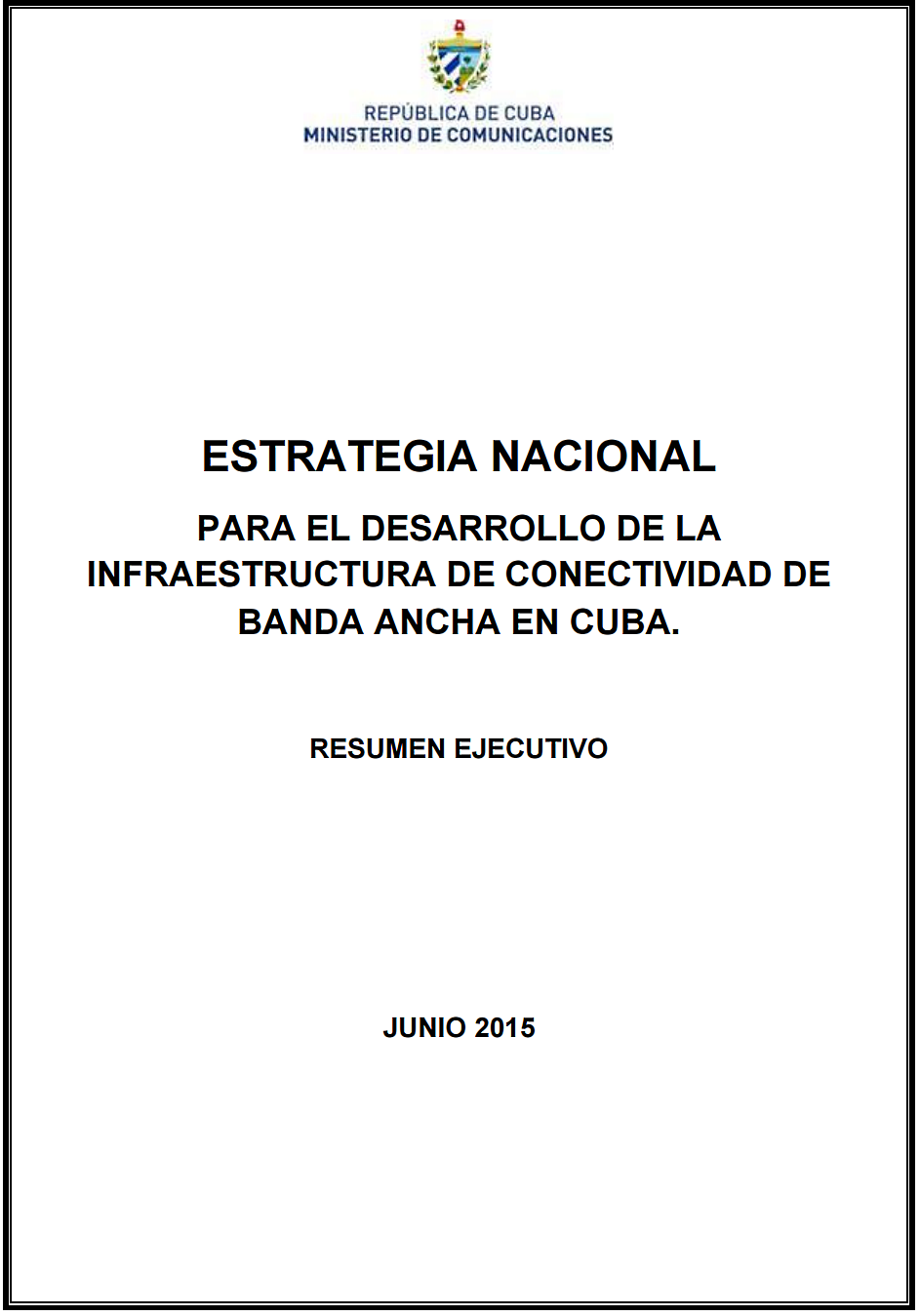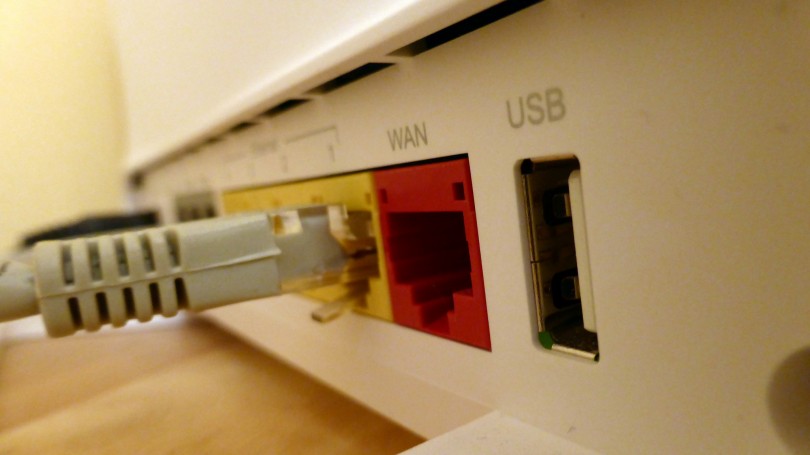aNewDomain — According to the International Telecommunication Union, every nation should have a plan for formulating and increasing broadband infrastructure. In a 2013 report on broadband planning the ITU showed a clear correlation between citizens’ access to affordable services and a national broadband plan. A subsequent report measured the state of national planning, and found 140 nations with national broadband plans, 13 that were working on them and 43 that had nothing of the sort.
At the time, Cuba fell in the “working on it” category. But earlier this week the Ministry of Communication released a draft of its national plan for the development of broadband infrastructure in Cuba. The executive summary is here.
Broadband Coming to Cuba
 The report projects three download speeds for Cuba’s future — it starts at 256 kbit/s (presumably to launch rather soon), increases to 2,048 kbit/s by 2025 and projects 10 mbits/sec by 2030. Compare that to U.S. broadband speeds: the Federal Communication Commission updated the definition of broadband from 4 mbit/s download and 1 mbit/s upload to 25 mbit/s download and 3 mbit/s upload. Google Fiber, among others, are rolling out much faster speeds, clocked at 1 gbit/s up and down in select cities.
The report projects three download speeds for Cuba’s future — it starts at 256 kbit/s (presumably to launch rather soon), increases to 2,048 kbit/s by 2025 and projects 10 mbits/sec by 2030. Compare that to U.S. broadband speeds: the Federal Communication Commission updated the definition of broadband from 4 mbit/s download and 1 mbit/s upload to 25 mbit/s download and 3 mbit/s upload. Google Fiber, among others, are rolling out much faster speeds, clocked at 1 gbit/s up and down in select cities.
This probably means that Cuba will roll out a DSL connection (which I’ve advocated for in the past) as a first step into modern Internet. The initial speeds are understandable, but the 2030 goal seems awfully low for 15 years of technological advancement. There’s also no real mention of upload speeds in the executive summary, which is disconcerting. A nation of content creators, and those who have not had a personal voice in the Internet, will probably want decent upload speeds.
Cuban Goals
The plan indicates a number of economic and conceptual barriers to broad connectivity in addition to a list of goals. It hopes to tackle things like connecting homes and institutions, improving cybersecurity and establishing more reliable university and research connectivity. Every goal has specific objectives, such as connecting every research institute and university to a national research and education network, clocking speeds that are at least 2 mbit/s down for 70 percent of users, and 256 kbit/s down for 30 percent of users.
Implementation guidelines are present as well. Specific recommendations include “check the prices of personal computers and smart phones” and “evaluate building another Internet exchange.” And there are two resolutions — to approve the current plan by June 22, 2015 and prepare an implementation timetable by October 2015.
It’s unclear who is doing the approving, and the document did not ask for comments.
But, of course, it’s just the executive summary. I haven’t seen the full document — it’s unclear who has. This does not seem, to me, like an implementable action plan, but a developmental starting point. It also raises more questions than it really answers, like what do they mean by “Internet connectivity.” Is that international Internet connectivity, or some version of intranet? If it’s the former, will it be established via satellite or undersea cable?
While most of this is unclear, the summary and plan is more than we’ve seen from Cuba on internet connectivity in a long time. We’ll just have to wait until October.
For aNewDomain, I’m Larry Press.
First image: Screenshot by Larry Press
Featured image: Broadband by Sean MacEntee via Flickr













